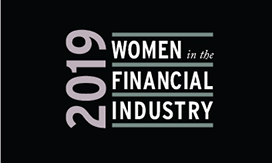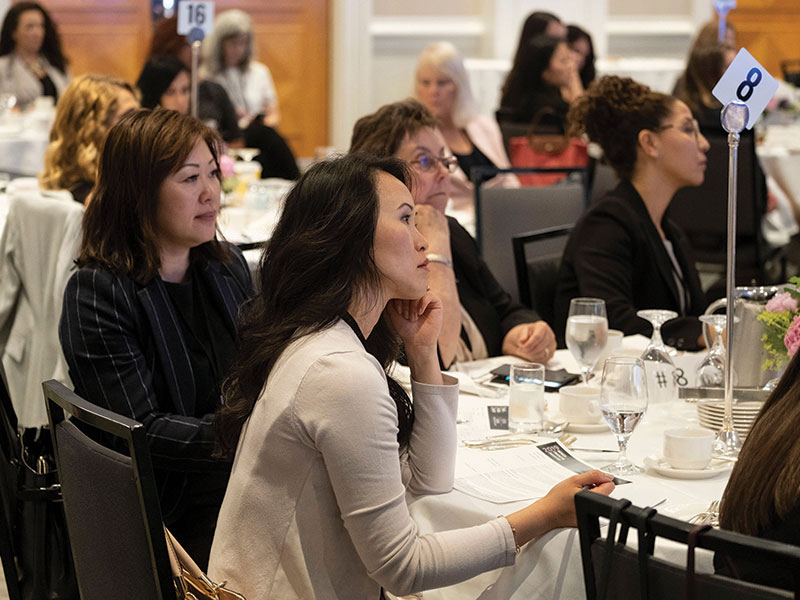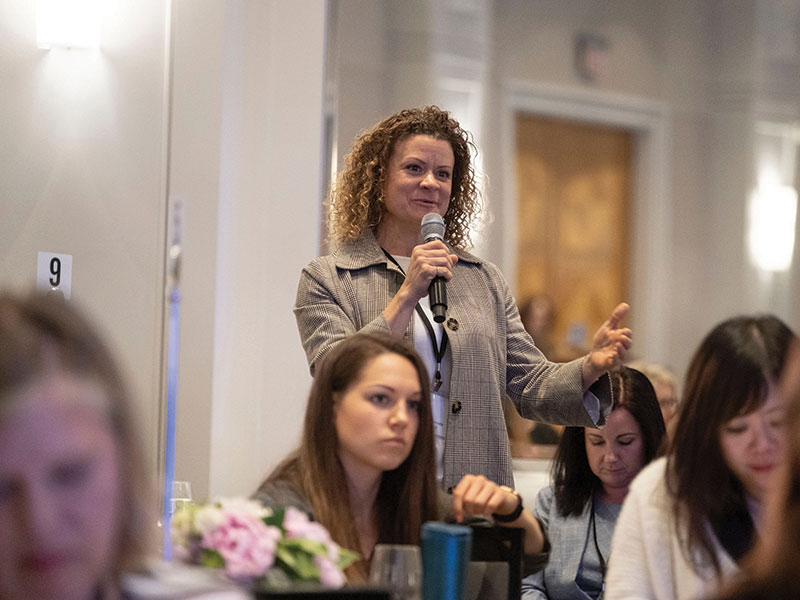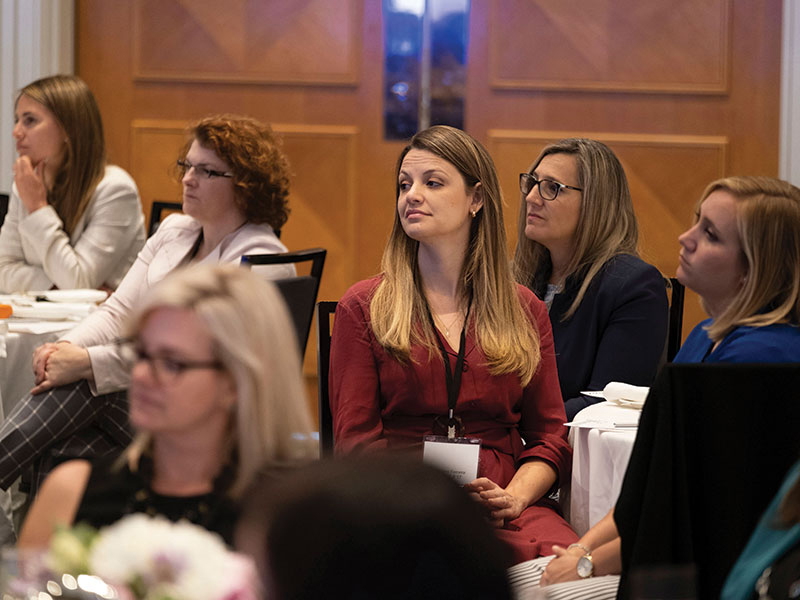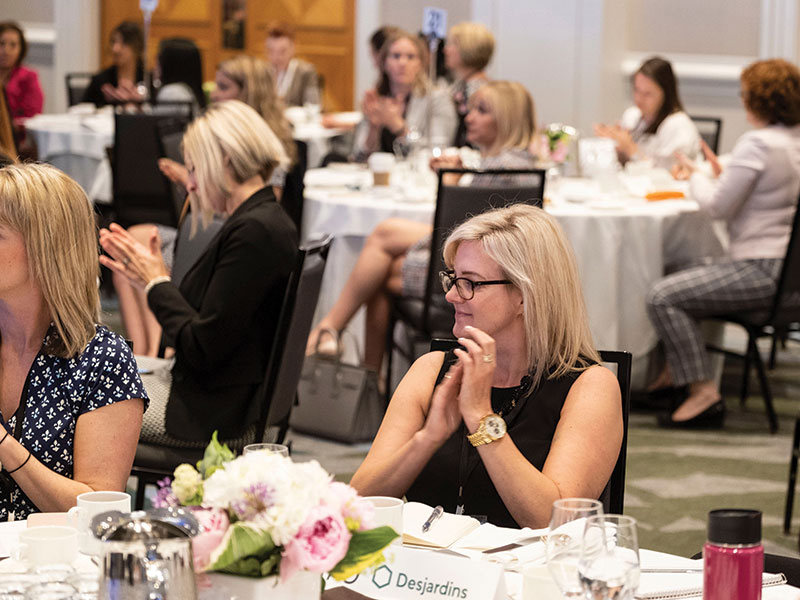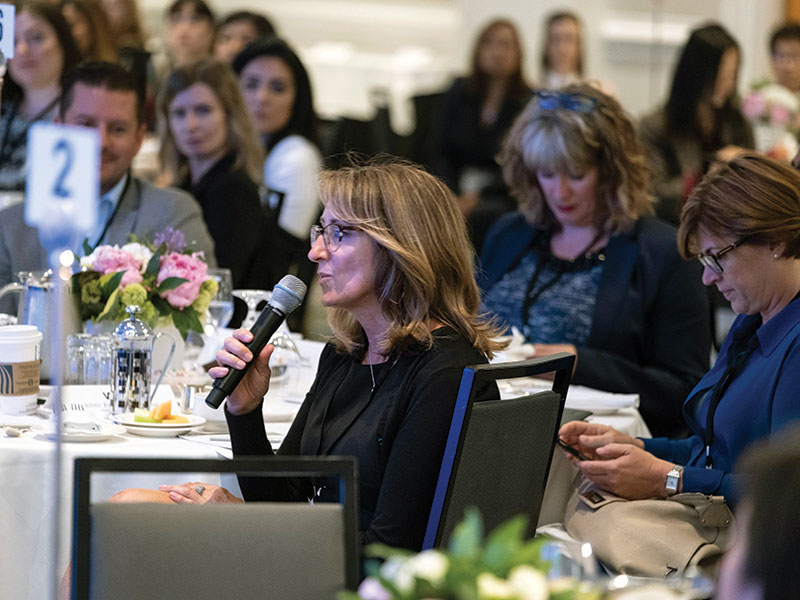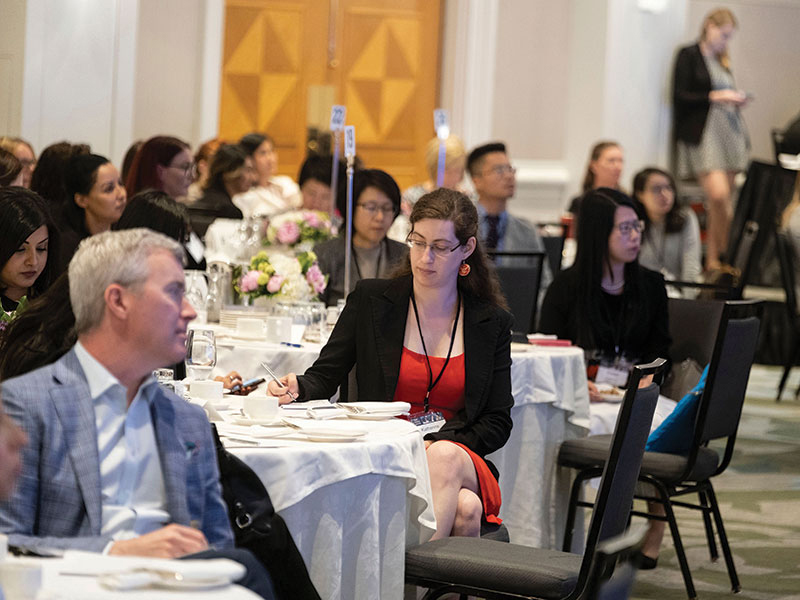SPECIAL SPONSORED CONTENT
CORPORATE COMMITMENT TO WOMEN PANEL - VANCOUVER
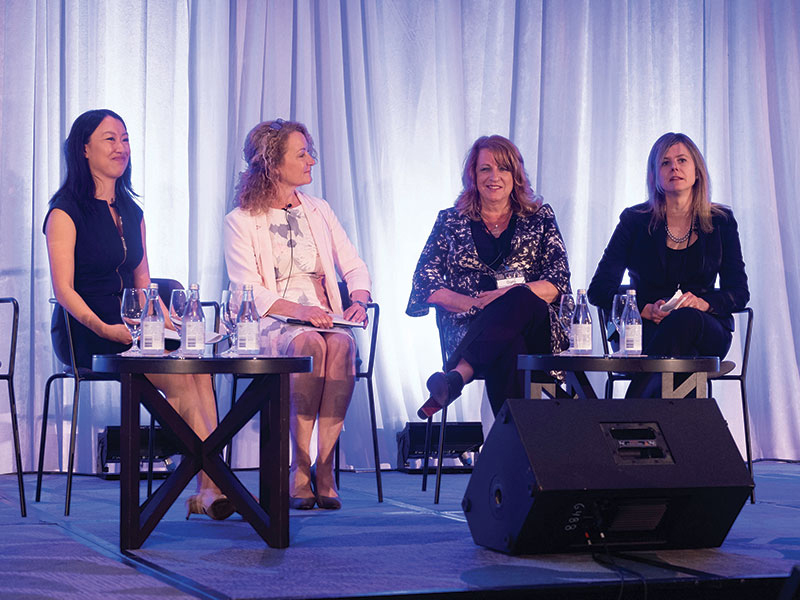
From left to right: Melissa Shin, Lori Landry, Diana Godfrey, Melanie Adams
Hosted by:
Panel:
Melanie Adams,
RBC Global Asset Management
Diana Godfrey,
Fidelity Canada
Lori Landry,
Sun Life Global Investments
After the success of the 2018 Women in the Financial Industry conference held in Toronto, this inspiring event expanded in 2019 to include three cities: Vancouver, Montreal and Toronto. The 2019 theme was “Creditworthy: navigating success as a woman in the financial industry.” Held on June 3, 2019, the Vancouver session featured a panel of three senior leaders discussing corporations’ commitment to women. The leaders shared details of several gender-focused initiatives, as well as the positive results from those corporate programs. All three leaders also acknowledged, however, that there is still work to be done.
MELISSA SHIN: How have you made the case for gender diversity in your company?
MELANIE ADAMS: We know from the Canadian Securities Administrators that only 15% of board seats in Canada are filled by women. We have a long way to go. At RBC Global Asset Management, we have made gender diversity a strategic priority, and the result is that it has become woven into the fabric of the organization.
Every quarter, we have a firm-wide call where we report on our financial results, but we also report on every single one of our strategic measures. Being honest and transparent keeps us accountable, and we’re finding that employees have gender diversity in mind while recruiting and promoting members on their team.
DIANA GODFREY: For us, there’s the client side and the employee side, but most importantly, we make sure we’re working together for a common goal.
Firstly, our organization looks at it from a client perspective to understand what our clients’ needs are, particularly women. The best way to do so is to ask and not to make assumptions. For example, we had a client dinner with a subset of our female advisors to ask them what we could do differently and how we could help them.
Internally, employees see through [any initiatives] if you fake it. The reality is you can make change, and using your employees to help create that change will have a much more positive effect. We also have a women’s leadership group, and I am happy to say that our senior executive team is 50% female, but we have more work to do.
LORI LANDRY: To make the case for gender diversity, five years ago I came up with a solid business rationale for why we needed to invest in this segment. The fact that within the next eight years, women will control nearly $4 trillion in financial wealth really got everyone’s attention. It was clear that there is a growing need and opportunity to help female financial advisors augment their investment knowledge and confidence in this aspect of their practices.
Through insight we gathered, we found that female advisors desired a forum where they could network and share best practices in an environment where like-minded women could gather. That is how I came to create a conference called the Sun Life Global Investments Women’s Investment Symposium, which continues to fill up within an hour of our website registration going live.
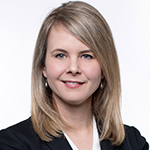
“We know from the Canadian Securities Administrators that only 15% of board seats in Canada are filled by women. We have a long way to go. At RBC Global Asset Management, we have made gender diversity a strategic priority, and the result is that it has become woven into the fabric of the organization.”
- Melanie Adams, Vice-President and Head, Corporate Governance and Responsible Investment, RBC Global Asset Management
SHIN: What steps has your company taken to retain mid-career women and prepare them for senior leadership roles?
LANDRY: Sun Life has put a stake in the ground saying that we will seek to have 40% females in positions of VP and above. Through research on what’s stopping women who are mid-management from becoming senior executives, we found three main buckets. The first is confidence, the second is networking capability, and the third is around mentorship or advocacy. Sun Life has put together a group called Empowered Exchanges with those pillars as the key parts of how we’re engaging women—not just in mid-management, but all female employees at Sun Life. I’m really proud to work for a company that has invested in women this way.
ADAMS: Wealth management at RBC has a diversity committee that has five work streams to touch on all areas, and one of the streams is focused on women. One of its key initiatives is a mentorship program for women around the time that they are going on maternity leave. I had my own bad experience, and that’s not the kind of support that we want women to have when they’re going through these big transitional periods. We also have found that sitting on the boards of non-profit organizations is a really good way to develop leadership skills. So as part of a pilot program, we have partnered with B3 Canada, which is an organization that matches prospective directors with non-profit boards. We are currently sponsoring women to sit on non-profit boards and we’ll assess whether they feel this helped them develop leadership skills.
GODFREY: As an HR practitioner, I’m challenged just finding enough women who want to work in financial services, asset management or distribution. What I hear from my managers are things like: “Well there just aren’t enough women, so I don’t have a choice.” The thing is, we’re not looking in the right places, and we need to change the way that we look for women. I hate the word “fit”: when somebody says that person won’t fit, I say, “I think they’re perfect because they’ll change the dynamic of the group.” Furthermore, within the organization, mentorships are wonderful, but sponsorships are even more important. A mentor gives you advice, but a sponsor advocates on your behalf, and you earn that relationship. If you can find people in the organization who will be your sponsor and who will advocate for you, and advocate for women, that goes a long way to making change.
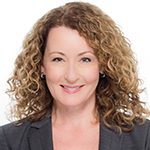
“82% of advisors in Canada are men; 73% of female investors are dissatisfied with their advisor; and 80% of women will change advisors when their spouse dies, because often no relationship has really been built with them.”
- Lori Landry, Chief Marketing Officer, Sunlife Global Investments
SHIN: How is your company moving beyond gender diversity to consider all forms of diversity?
GODFREY: It’s hard for us to measure backgrounds of people in our organization, since we’re provincially regulated, which means that information such as ethnic background and place of birth [are provided] on a voluntary basis. We find that people are skeptical about providing that information, thinking that somehow it will disadvantage them. So, we’ve said we will keep it to three people in HR who know that information. We’re just starting on that journey because the reality is, if you can’t measure it, it’s hard to say that you’re moving the needle. However, we do know that we want to take this journey with our employees, so we have a number of employee resource groups [ERGs] that are based on people’s commonalities. The most important thing is that nobody feels excluded.
LANDRY: We’ve built the Sun Life Mosaic, a digital platform that includes the Sun Life Pride Network, Black History, Indigenous Heritage and many more, which 3,000 people have signed up for. It’s been amazing to watch these other groups gain confidence and courage to speak up, and we can really benefit from some investment in people who are like-minded.
ADAMS: One of our initiatives is the communication that comes from RBC. For example, we have many group emails on different cultural celebrations, to bring that education into the workplace. We also focus on diversity of experience when hiring. Recently, I’ve hired a couple of people, and my HR business partner challenged me about whether I needed to put the minimum requirement of a finance or business degree. I think that’s an interesting way that the industry is moving. I also agree that it is very challenging [to measure diversity] outside of gender diversity. My team handles the proxy voting for all the companies that we invest in. What this means is that we are voting for directors in all our investment companies, and we are very progressive in voting for women directors on boards. We also talk about other types of diversity because that’s in the pipeline. We need to think about how we are going to be able to push for diversity beyond gender when we don’t have the data. It is challenging, and we’ll have to see how we’re able to continue the dialogue on diversity.
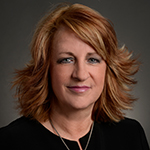
“This isn’t about advancing women at the expense of men. It’s really about working together and creating a level of equality.”
- Diana Godfrey, Senior Vice-President, Human Resources, Fidelity Canada
SHIN: How have employees at your company reacted to diversity initiatives?
ADAMS: A group of analysts on our investments team recently started their own women’s network initiative—it was very well attended and well received. We also had a lot of positive feedback around a program we have in B.C., where we partnered women in second-year university with people in asset management, after we discovered that it tends to be at that stage when women veer away from the finance stream. The morale impact on employees has been tremendous. I would caution that you need to be careful not to convey the wrong message, for example, suggesting that women need more training than men. You also need to be mindful and clear that opportunities are merit-based when it comes to things like sponsorships, for example.
LANDRY: It has been incredibly positive, though we need to ensure all groups have a vehicle where their voice can be heard; a recent example was a young man who approached me to say that he felt we needed to do more for visible minorities such as himself. So this was a good reminder that we need to evolve our thinking—which we have done by expanding our Empowered Exchanges to be inclusive of a variety of groups. And as we build out an increasing number of programs, there is no shortage of ideas and volunteers to help. We also need to ensure alignment and coordination among groups so employees don’t get confused by all the great programs we’re building.
GODFREY: We have many different ERGs, and probably our largest and most successful one out of the gate is our Pride one. The executive leading the charge, being passionate and gay, wanted to have a platform to talk about it. We had some employees who really disapproved of homosexuality until they went to a couple of the pride events. They came up to him, and to us, afterward and said: “We’ve been educated, and we were wrong.” To me, that is the biggest testament for having these ERGs inside the organization. It’s not just about giving people a voice, but about changing opinions. The fact that it’s about employees helping employees learn, and not HR telling people they must learn, makes it that much more of a positive experience.

